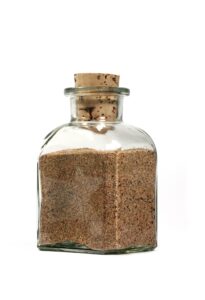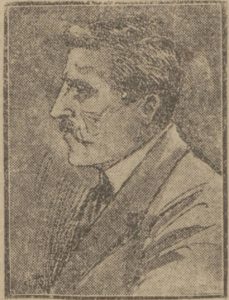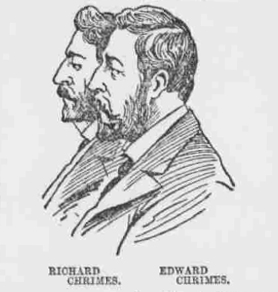 Famous for its trademark showing someone walloping the living crap out of a reanimated skeleton (if skeletons can be said to possess any living crap), Radam’s Microbe Killer was a fraud.
Famous for its trademark showing someone walloping the living crap out of a reanimated skeleton (if skeletons can be said to possess any living crap), Radam’s Microbe Killer was a fraud.
Its inventor, William Radam, published a book, Microbes and the Microbe Killer (189o) describing at great length his quest for a cure for his own rheumatism, which he believed to have been caused by microbes. A florist and nurseryman, Radam associated the killing of microbes in the human body with the killing of pests on plants. He sought to find a harmless antiseptic gas that would cleanse the human body just as fumigation destroyed the bugs in his greenhouses.
In the book, Radam is unspecific about the methods that led to his claimed success, saying vaguely “A little more improving, and I had the antiseptic that proved to be an antiseptic, without having experimented upon my body.” (p49, revised edition 1895) Analyses, however, showed that the remedy was more than 99% water, with traces of sulphuric acid, sulphurous acid and ash (Journal of the A.M.A., 1910)
For more in-depth information about Radam, his remedy, and the opposition he encountered, there are interesting articles at The North Texas Skeptic and Quackwatch.
.
Wm RADAM’S MICROBE KILLER
Nearly all well-read people are familiar
with the scientific investigations of Profs
Koch and Pasteur, respectively of Germany
and France, as well as a number of other
scientists of almost equal renown, whose ex-
periments have proven conclusively that all
diseases are causes by microbes in the blood.
They are called microbes, because they are a
living matter, and only discovered by the
aid of powerful microscopes. But until
William Radam discovered his Microbe Killer
Medicine there was absolutely nothing
known in the annals of Medicine that would
destroy these Microbes or Germs of Diseases
existing in the blood. The Microbe Killer
does Kill the Microbes in the blood without
fail, as the thousands of testimonials we have
in our possession demonstrate.
Microbes being the cause of all diseases,
Microbe Killer will therefore cure them.
WE EXCEPT NO DISEASES WHATEVER.
Ladies and gentlemen desiring light upon
the Microbe Theory, as well as upon any dis-
ease they may be afflicted with, are cordially
invited to call and get pamphlets for full par-
ticulars. We will forfeit $1000 if any single
one of our testimonials can be proven as
not genuine.
RADAM’S MICROBE KILLER CO.
For sale by E.C. FLEMING, Druggist, No.
South Detroit Street
Source: The Daily Gazette, Xenia, Ohio, 16 November 1889



Wonderful stuff _ I love this site!
Ooh, I am very excited to get a comment! I get way more hits on this blog than my other one, and yet hardly any responses, so thank you, Sarah!
I have a box full of old post cards and envelopes address to this company for case of the radam,all postmarked before 1930″s. photos avaible soon.
I’ve got a jug marked ” Keep Jug tightly corked, Wm. Radam’s Microbe Killer No. 1.”
It’s in excellent condition and still has the original cork broken off in the spout.
Any idea of it’s worth ?
Any help would be greatly appreciated. Thanks
Hi Rita, Unfortunately I don’t know anything about antiques but what an interesting thing to own! You could try Worthpoint http://www.worthpoint.com/ – they have a free trial for 7 days and they appear to have several of these items listed.